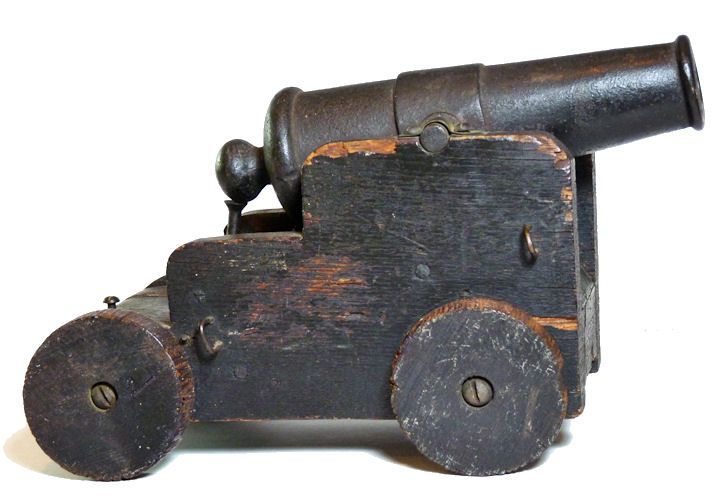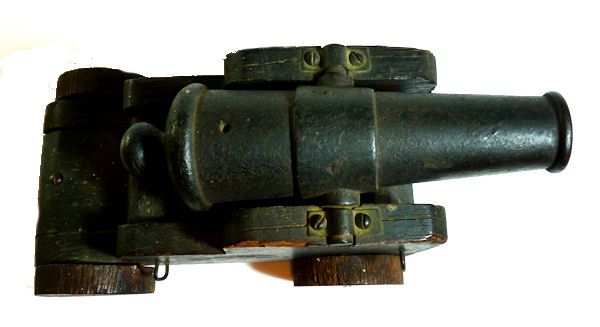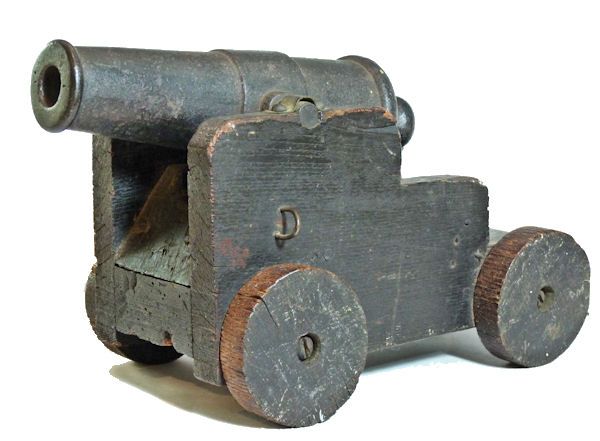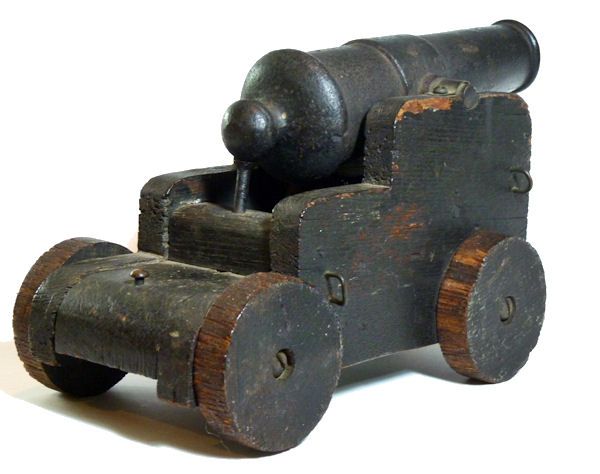Iron Carronade Miniature Signal Salute Cannon

Signal cannons were used aboard ship and ashore to make salutes, to warn of danger, and to attract attention in the case of
an emergency. They were also used to start yacht races. These cannons were generally cast in the style of the period
to which they belong. Presented is a small signal cannon
modeled after the carronade that was used by the Royal Navy in the early 1800’s. The carronade was designed as a short smooth
bore, cast iron weapon that was invented by the Carron Company, an ironworks in Scotland. It was used from the 1770s
to the 1850s as a powerful, short-range anti-ship and anti-crew weapon. Carronades were very popular until rifled naval
artillery shells were introduced which resulted in fewer close-range battles.

This example has a heavy cast iron barrel that is mounted on a ship’s wooden
gun carriage. The touch hole, in the picture above, shows use. It likely dates from the period when this type cannon
was most popular.
It is being sold for display purposes only, and no attempt should be made to fire it without it first being inspected by a gunsmith.
 |
 |
NUTS, BOLTS and SCREWS: There is common misconception
that square and hexagon nuts and bolts were not invented and used until sometime after 1908. That is wrong. There are
numerous references to square headed and hexagon headed bolts being used in ship construction in the 1860’s, and being used
in the fastening of armor much earlier. The most authoritative statement exists in Encyclopedia Britannica’s Article 39228 which is quoted here:
Metal screws and nuts appeared in the 15th century. The square or hexagonal head or nut was turned
with an appropriate box wrench; a T-handled socket wrench Some screws used in
16th-century armour have slots (nicks) in which a screwdriver may have been used, although this tool is not shown. Deep notches
on the circumferences of the heads of other armour screws suggest that some type of pronged device was used to turn them.
Slotted, roundheaded screws were used in the 16th century, but few screw-and-nut-fastened clocks are in evidence earlier than
the 17th century. Metal screws were called machine or machinery screws since they were made of metal and mated with threaded
holes.” We are conservatively estimating its age as at least 170 years, but it could be later.
CONDITION: The cannon is painted black, and
retains much of its paint which may not be original. The carriage is also painted black. There is some loss of wood due
to use, but for the most part the carriage is complete and in sturdy condition. The barrel shows some casting imperfections,
but appears sound. Because of its age it should not be fired without a gunsmith’s inspection. The trunnions are cast
in the center as part of the barrel and the metal trunnion caps are present on the carriage. There are no mold
marks or inscriptions. There are two metal retaining guides on the right side of the carriage and one is missing
on the left.
DIMENSIONS
Bore 18.7 mm or .74“
Length of Iron barrel 9″
Overall length carriage and barrel 13″
Width of barrel at bore1 35/64″
Width at last reinforcing band 2 45/64“
Width at rear wheels 5 1/2″
Weight of cannon 9 7/8 pounds
